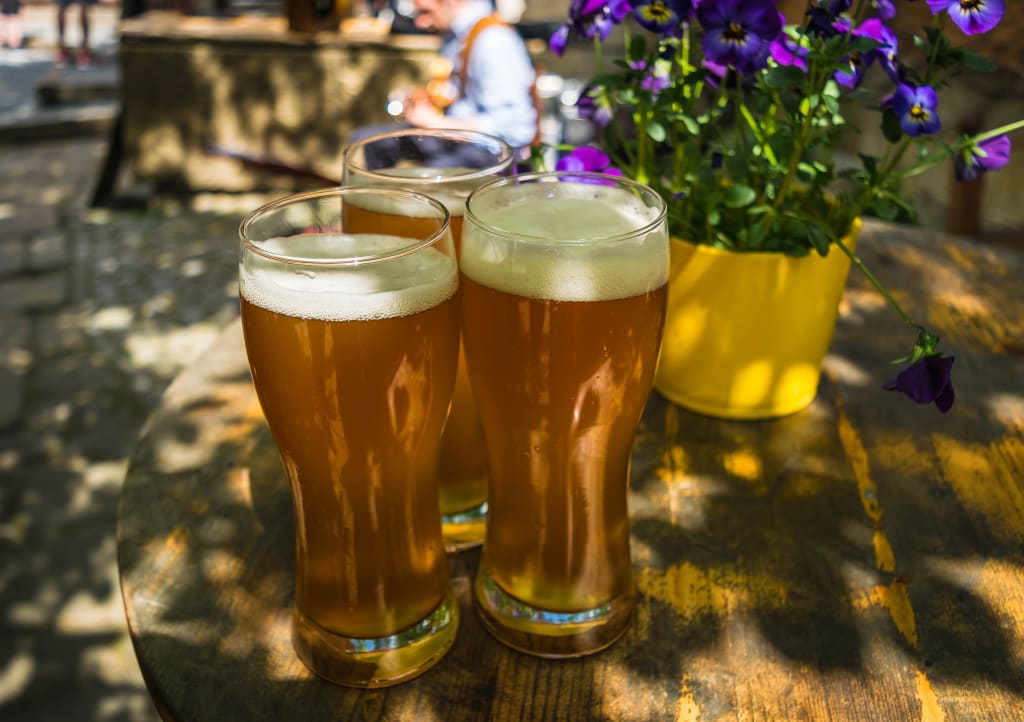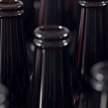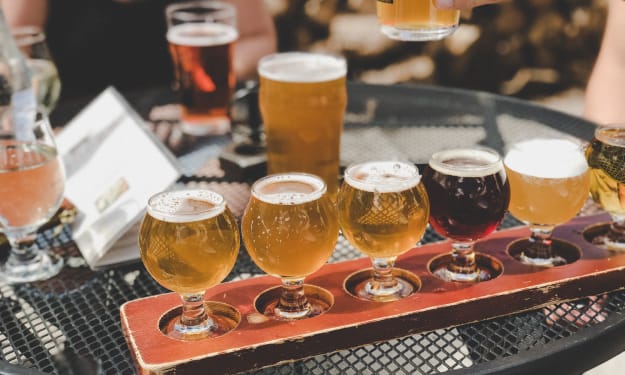Brewing Your Own Beer, 101: Yeast
Let yeast do the work

In this episode of "Brew Your Own Beer 101”, we will spend some time on yeast. These simple Eukaryotes are part of a diverse and extensive group of organisms classed as Fungi.
(If you enjoy reading this article, please leave a tip and/or sign up to our free newsletter.)
Yeast, the sugar fungus for beer
The scientific name for yeast is Saccharomyces cerevisiae. Saccharomyces means “sugar fungus” and cerevisiae means “for beer”. Yeast is the common word used for S. cerevisiae, but that does not mean that all yeasts have the same name or produce alcohol. Most yeasts can ferment sugars but have different scientific classifications and applications. For this article, however, yeast will refer to S. cerevisiae, the sugar fungus for beer!
Yeasts are single-celled organisms that you can find everywhere. Yeast needs sugar and other nutrients to grow, so we can find it in abundance on ripe fruits, nectar or any other material that serves as a sugary snack. It will not surprise you that people have used spontaneous fermentation practices (because of natural infection and colonization) to produce wine and beers for thousands of years. Yeast growth requires energy. Yeast cells take up and extract energy from simple sugars that they take up from their immediate environment. Yeast can generate energy from sugar in two distinct ways. One way is to convert sugar into carbon dioxide and water using oxygen. This is the most effective strategy, yielding heaps of energy from only a few sugar molecules. This chemical reaction is identical to those carried out in our body and drives robust growth in yeast. Keep in mind that growth means two things here: cell division (and an increase in the number of yeast cells) and cell growth (an increase in cell size or content). The distinction is not relevant here but becomes more important when we talk about yeast performance and extract loss.
Converting sugar into alcohol. Fermentation.
Yeast can also prosper in the absence of oxygen. Rather than breaking down sugar into water and carbon dioxide, yeast converts sugar into alcohol and carbon dioxide. We call this process ‘fermentation’ and generates much less energy. While cells get by, the absence of oxygen limits yeast growth. What does that mean for brewers?
We make use of both conversion processes in yeast. In the early stages of brewing, we want the yeast to grow vigorously and stock up on energy for fermentation in the later stages. We, therefore, make sure that we either add a significant population of yeast cells that have been growing robustly (we call that a ‘starter’) and/or we make sure that our wort (the beer before fermentation) has plenty of oxygen when we start our brew. This oxygen will allow the yeast population to build up before fermentation kicks off (when all oxygen has gone). Fermentation starts when yeast has used all the oxygen in the wort. The production of carbon dioxide gas and its release from your fermentation vessel is the telltale sign. Success!
When does fermentation stop?
Fermentation can stop for several reasons. I have listed some here below:
1- Your yeast has used up all fermentable sugars. No food, no play.
2- The yeast has consumed nutrients it needs for fermentation. Yeast cells use a variety of other nutrients for growth and fermentation, many of which are already present in your wort. They can, however, run out and stop your fermentation.
3- Yeast can no longer tolerate alcohol or other fermentation byproducts. Too much alcohol is not good. The same is true for yeast cells. Yeasts can only tolerate a relatively low level of alcohol. Tolerance levels vary wildly between strains and is a defining feature when selecting your yeast. In the vast majority of recipes and beer styles, alcohol levels will be below those tolerable to your yeast strain. Besides alcohol, scientific studies have implicated CO2 concentration and pH in inhibition of fermentation, both of which change during brewing.
Provided that you started your brew with a healthy yeast population and oxygenated wort, fermentation will end because your yeast has converted all sugars. When you started with a low yeast cell count, or you aim to create a high alcohol brew, the other factors may come into play. I would always recommend using a healthy yeast culture as a starter when you are in doubt about your yeast. Yeast cells will burst open after they die and if this happens early in your brew, it may give your beer off-flavours. I will post more about starters, but if you have immediate questions, please contact me.
Besides simple sugars, yeast can also convert other compounds in your beer. There is considerable variation between yeast strains and you find that each strain can produce its own set of metabolites. These metabolites contribute to the overall flavour profile in two ways. First, they will create compounds that give you beer flavour (good or bad). Second, yeast will remove compounds from your wort, impacting flavour and texture. Again, each yeast strain will have its own capabilities and character. This is one reason we only use some yeasts for specific beer styles.
Concluding remarks
Now you know the few rules homebrewers live by when they work their yeast. Yeast does the hard work, not you. The brewers’ job is to keep unwanted bugs out of the beer and make sure that yeast health and fermentation conditions are optimal. Most recipes and process we commonly use will achieve that. Once established, your interest in brewing styles, processes, and practising will do the rest.
You need not be an expert to succeed as an amateur brewer. Cleanliness, diligence, good ingredients and yeast will do the trick!
CHEERS!!
Edgar Huitema is a writer for “The Beer Collection”, a collection of articles describing the basics and science of brewing for the novice and veteran home brewer. To learn more about and get help with homebrewing, please sign up for the free TBC newsletter or join as a subscriber.
About the Creator
Brewingbrowser
Science powers delicious beer making. To subscribe to our free newsletter, please join here: https://brewingbrowser.com






Comments
There are no comments for this story
Be the first to respond and start the conversation.